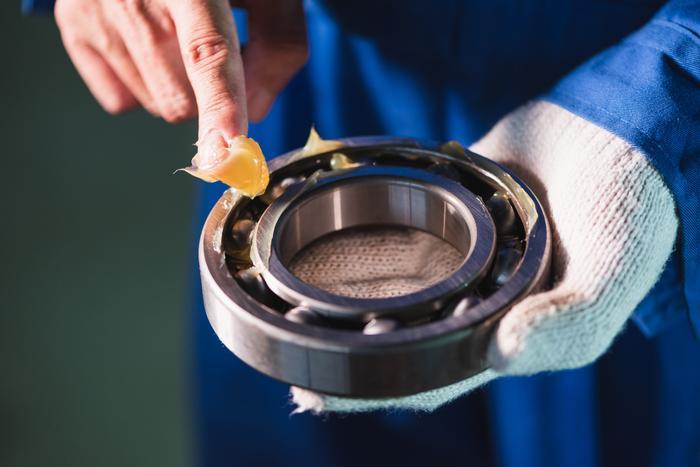Don’t Let Grease Incompatibility Lead to Motor Failure

Singapore-based Maintech Engineering & Supplies explores the importance of grease compatibility in reducing failures and unplanned downtime.
Electric motors use rolling-element bearings responsible for supporting the rotor, maintaining a consistent air gap between the stator and rotor, and transferring load from the shaft to the motor frame.
As a refresher, grease is not similar to oil despite both acting as lubricants. Grease is a thicker substance than oil, making it easier to stay on surfaces despite centrifugal force and gravity acting on it. Furthermore, grease can also remain between surfaces even when subjected to tremendous amounts of pressure. Despite these capabilities, it is important to keep in mind that not all types of grease are compatible with one another.
ELECTRIC MOTOR GREASE
Grease in electric motors, specifically for their bearings, is designed primarily to reduce friction and wear, prevent corrosion, and work as a sealant to keep contaminants away from the motor’s critical rotating components. Making a grease solution that achieves these goals requires the following key ingredients: base oil, thickener, and additives.
Base oil: The base oil is the most important component of grease as it makes up between 70-90% of its total content, and it is also what does the actual lubricating. Base oil is categorised into two types, namely mineral and synthetic. The greases based on mineral oil work well in virtually all industrial applications, while those made from synthetic oils are more suited to applications involving extreme temperatures.
Thickener: The base oil gets mixed with a thickener, which creates the semisolid texture of the grease and makes up 3-30% of its content. Thickeners come in three types: simple metal soaps, complex metal soaps, and nonsoap thickeners. Polyurea, a simple metal soap, is often used in grease for motor bearings.
Additives: The Machinery Lubrication magazine explains under the Grease Basics section that additives enhance the existing desirable properties of the base oil and thickener, suppressing the unwanted ones and imparting new properties to the solution. The vital additive packages that typically make their way into grease solutions are oxidation inhibitors and antiwear.
GREASES
Mixing different greases leads to major issues because although the two grease compounds may be the same in their base oil, performance indicators, colour, and other factors, their thickener and additives are most likely not. In the case of mismatched thickeners, two greases with dissimilar viscosity lead to a combined result with suboptimal performance.
On the other hand, additives play a crucial role in determining grease performance despite representing just a small fraction of its total content. Thus, if the additives in two different types of grease do not match, they may create unwanted deposits, develop corrosive conditions in the grease, and reduce the effectiveness of the additive packages.
All in all, combining incompatible grease solutions means a loss in lubrication that will result in the moving parts of a motor experiencing accelerated wear, increased vulnerability to rust and corrosion, and ultimately ending up completely unprotected. In time, catastrophic motor failure will follow.
Three characteristics determine if two greases are compatible: consistency, mechanical stability, and dropping point. Checking the consistency involves observing the change in viscosity of the combined mixture following storage at elevated temperatures. Ideally, the change should still be within the ranges of the individual greases after they experience the same high-temperature storage conditions. The same applies to the mechanical stability of the new mixture, and it must remain within the range of consistency of each grease solution being mixed. The dropping point of the mixed grease must not be significantly lower than that of the individual greases.
IF IN DOUBT, CHANGE IT OUT
If there is not enough of the original grease and you are not sure if the new one is compatible with it, it is safer to replace the former. This means purging the existing grease and thoroughly cleaning out the parts before applying the new grease to the electric motor bearings.
Using and reapplying the right grease is essential in electric motor maintenance, as using incompatible mixtures will inevitably lead to motor failure, costly repairs and downtime, and reduced productivity.

